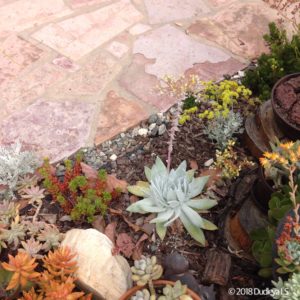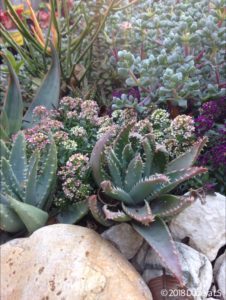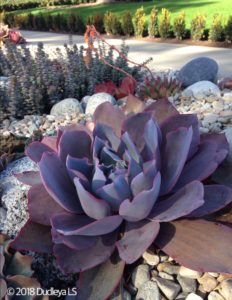
A succulent garden does not have to be a cactus garden, most cacti are native to desert like climates. But unlike popular believe, Southern California has a Mediterranean climate, not a desert one. Like in the Mediterranean, California’s climate is characterized for having hot long summers and short rainy winters. Because summers are dry, long, the native flora has evolved to withstand long periods of drought. Some plants go into summer dormancy, while others have developed sclerophyllus foliage that allows them to hold moisture. As water conservation is key and a vital for the survival of California natives, succulent plants are ideal companion plants because they too have adapted to withstand drought conditions. Unlike CA natives that have developed foliage that keeps transpiration at a minimum, succulents preferred method is to store water in their fleshy leaves and stems.
Succulent gardens can be diverse, lush, and colorful. If I haven’t convinced you yet, succulents can
- also attract beneficial insects, bees, butterflies, and hummingbirds.
- They are drought tolerant, as water-wise plants they will thrive on infrequent irrigation.
- Because they are slow growing perennials, they require little maintenance.
- They make excellent companion plants for California natives.
- They are easy to propagate by cuttings.
Whether you choose to have a succulent garden or a mixed succulent garden, there is a succulent plant for every garden design. Unfortunately, most succulents available in the ornamental horticulture industry are native to South Africa, Madagascar, and Mexico. But don’t let that discourage you, most Agave spp. plants are native to North America, andthebeautiful Dudleya spp. are native to California. So, remember, while all cacti are succulents, not all succulents are cacti.



